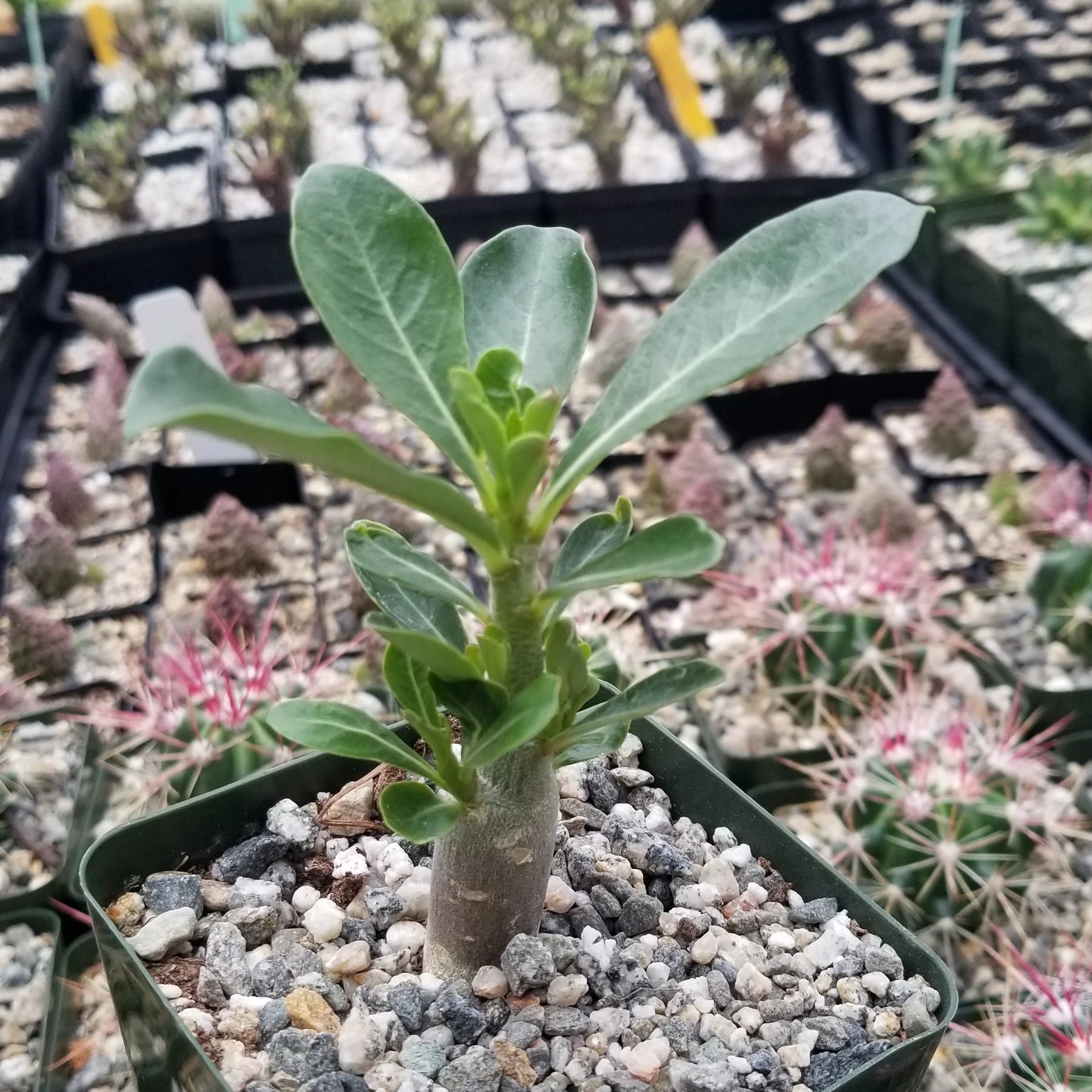Adenium Obesum or Desert Rose
Updated: September 16, 2022

Native to the African continent, the Adenium obesum is a true showstopper placed anywhere in your home. Be it at the patio, the entrance, or indoors; the Desert Rose is a sight to behold. This succulent is also common in the Middle East and Madagascar. Not just the Adenium obesum, the Desert rose agave hybrid is equally charming.

Key Characteristics of the Desert Rose
Desert Rose bears pretty deep pink flowers on its thick trunk. The petals are shaped like that of a rose, extremely delicate to the touch. Besides, the flower can be hybridized into different colors.
Since it is a slow-growing succulent, it grows only about 12 inches in a year. The plant's common name is Desert Rose, but there are others too. Like Sabi star, Impala lily, or mock azalea. The Adenium obesum belongs to the Apocynaceae family. The adult plant grows between three and nine feet tall. The blooming season is Summer, the dormant season is Winter, and it should be planted during Spring. The plant is not winter-hardy, i.e., it will die in frost and freezing temperatures. The Desert Rose loves total sun exposure and should be grown outdoors in USDA Zones 11 and 12. In cooler places, the plant should be grown indoors because it can die when exposed to colder temperatures.
Desert Rose Succulent Care
The Desert Rose demands almost no care except for a few conditions. For example, you need to be careful with the watering and light needs.
The needs of Desert Rose are:
- Sunlight: Desert Rose needs full sun. That is why the plant should be grown in a spot outdoors where it receives direct sunlight, away from tall trees that would shade the succulent. However, you need to make sure that the plant is not exposed directly to the afternoon sun because that can damage the leaves. If it is an indoor plant, ensure to keep the plant on the windowsill of a south-facing window.
- Soil: The soil for your rose succulent plant needs to be neutral to acidic with a pH value close to 6.0. Go in for sandy, well-drained soil. You can use the typical cactus soil that is mixed with gravel.
- Water: The watering needs of the Desert rose differs as per the season, time of the year, and the outdoor conditions. Between waterings, the soil should be dry. The container for planting this succulent should be either terracotta or clay that comes with drainage holes. Or else the roots will rot with the water standing at the roots. During the winters, however, watering should be minimal. Just about once monthly. This is the dormant period, and the plant has negligible watering needs. A tip to understand if the Desert rose is adequately watered or not, you need to look at the trunk of the plant. If it seems thick and swollen compared to other parts of the plant, then it means that the succulent's watering needs have been met.
- Temperature: The Adenium obesum needs warm temperatures. It cannot tolerate cold temperatures, especially those lower than 50°F. The ideal temperature for thriving the plant is between 65° to 90°F.
- Humidity: The plant cannot tolerate humidity levels as it thrives only in a dry, hot climate.
- Fertilization: Adding fertilizers can help the plant when it blooms. You can expect more flowers with fertilization. The fertilizer should be diluted by half and applied during the growing period and never during the dormant season. Once a month during late spring or summer is ideal.
- Propagation: Use seeds or cuttings to propagate these plants. However, the characteristic trunk is the result of seed propagation and, in most cases, cannot be derived when using branch cuttings.

Issues with Desert Rose
- Yellowing of leaves is a common issue. This occurs due to root rot. It could be because of a fungal infection.
- The leaves can develop spots due to the growth of powdery mildew. You will notice a white powdery growth on the leaves and stems. You need to address the issue with a fungicide.
- Spider mites are common pests for this succulent.
- The desert rose is toxic to cats, dogs, and other pets. Its sap is also poisonous to human beings. You need to be careful with kids with the Desert Rose around.
Most succulent owners care for Adenium obesum or Desert rose as a bonsai. Its thick trunk with the lush pink vibrant blooms makes it an ideal choice as an ornamental plant.



https://www.grandrapidswindowcleaners.com/
Lovely things!
Very helpful information. New found hobby at age 90. Live in south Mississippi and now know that I must bring the plants in doors for winter. Thanks!
Leave a comment